Specifications CP
1. MATERIAL. The word canvas has the Latin origin and means "made of hemp". Nowadays, in addition to hemp and flax, cotton began to be used to make the canvas, and with the development of technology - synthetics.
2. IMAGE. Obtained by direct printing on canvas. This method of inkjet printing on canvas is sometimes called "Giclee".
The canvases have a textured surface and this makes the colors look more saturated, more vivid, more interesting.
The inks are environmentally friendly, harmless, long-lasting and do not fade over time.
3. SUPPORT. The picture, printed on canvas, is stretched on a wooden frame, also called subframe. The thickness of the subframe is 20 mm (2 cm)
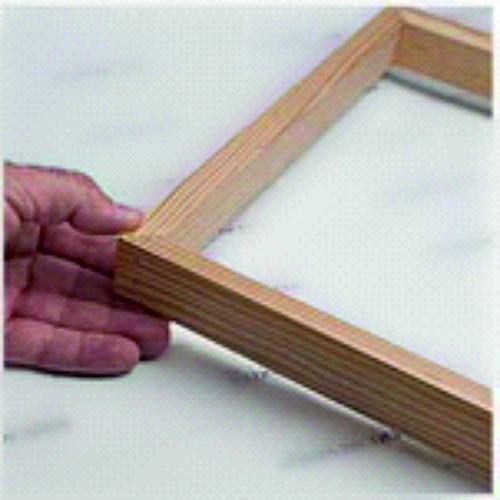 | 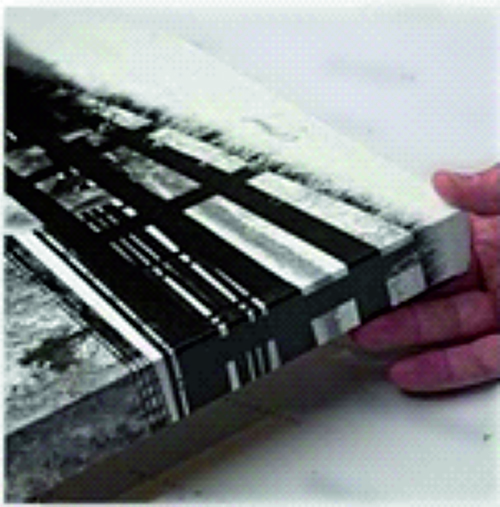 |
Our subframes are made of natural wood - most often spruce. The wood is treated and dried so that it does not deform over time.
The tension is extremely precise to get a vision with museum quality. Important!
The quality of our paintings is that the canvas does not relax.
Important! We do NOT use materials such as PVC, MDF, chipboard and any other similar substitutes.
You will often come across the term 3D pictures or 3D panels.
Is the image of these "3D pictures" three-dimensional?
No, the image itself is not three-dimensional. The feeling of volume comes only from the thickness of the picture itself.
4. INSTALLATION. You get the pictures ready to hang.
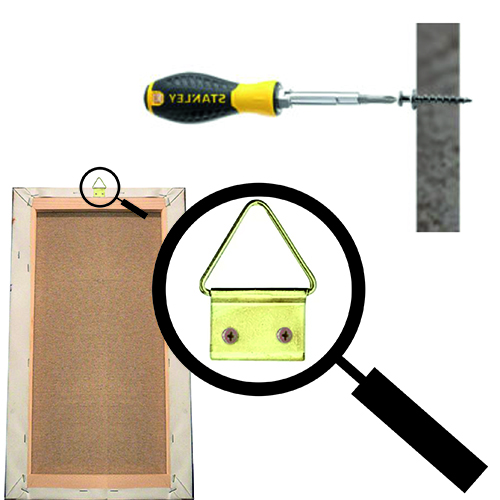 | On the back there is a classic picture hanger, one or two depending on the horizontal size. |
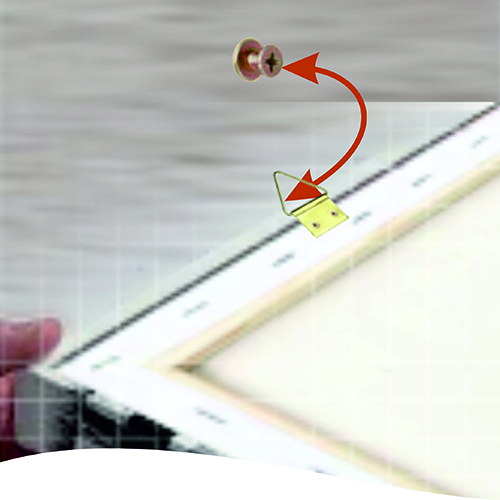 | 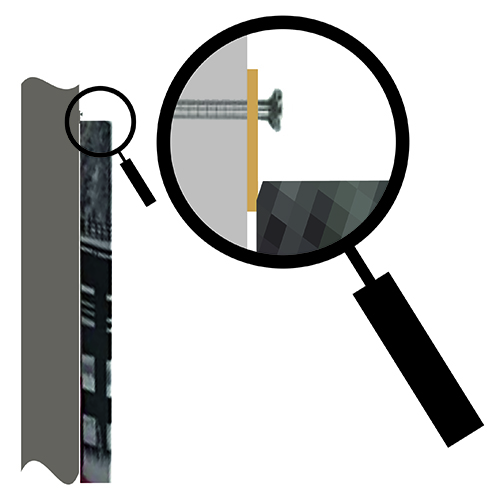 |
Important! If you get bored or decide to move the picture to another wall, the traces are negligible.
Do not be fooled that double-sided adhesive tapes do not leave damage to the walls. This is not PVC foil.
When repairing, the surface layer of the paint and even the plaster will peel off together with the tape.
5. SIDE BOARD. When stretched, the canvas envelops the frame and the side board remains visible. The ways to complete the composition are folded, mirror, stretched, white or black. We decide which is most suitable for finishing the specific composition. The explanations below are for your information only and in case you have any special requirements for which you should call us.
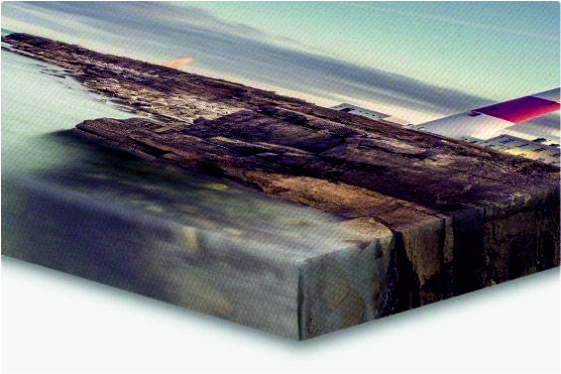 | • Folded edge |
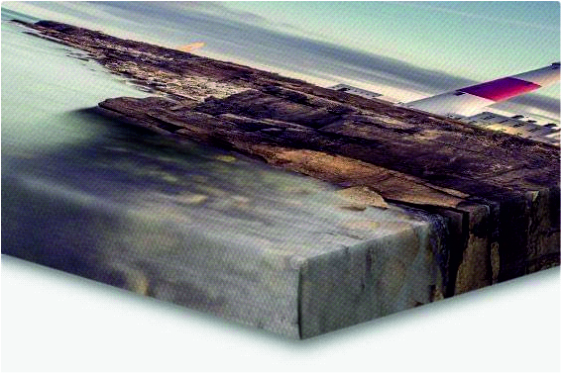 | • Mirrored edge |
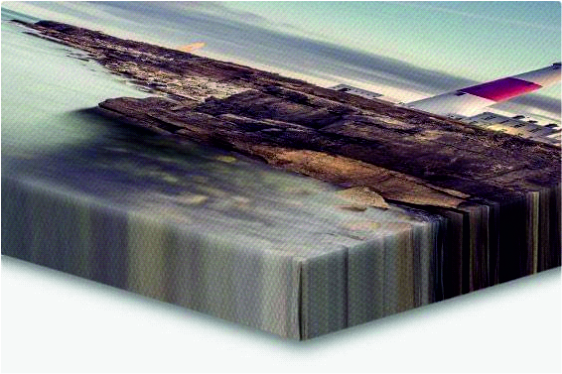 | • Stretched edge The image is fully visible and the outermost 20 mm is stretched. An interesting effect of spreading and movement. |
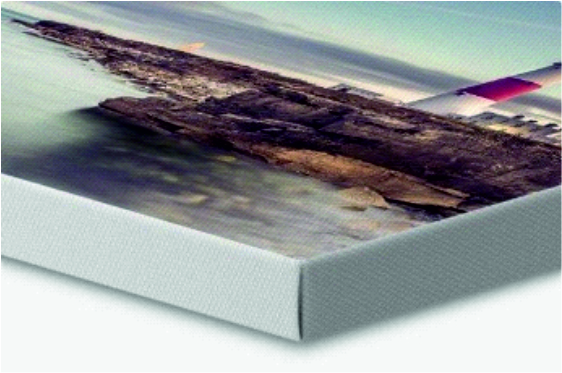 | • White edge The image is fully visible. The visible edge remains white. In some cases, this effect beautifully enhances the picture. |
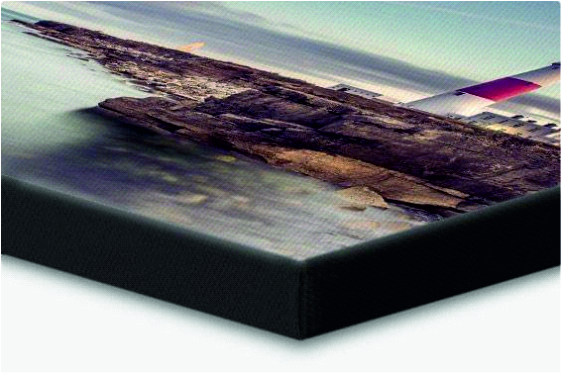 | • Black edge Similar to the white edges, but the visible edge remains black. Provides a pronounced contour and adds convincing contrast. |
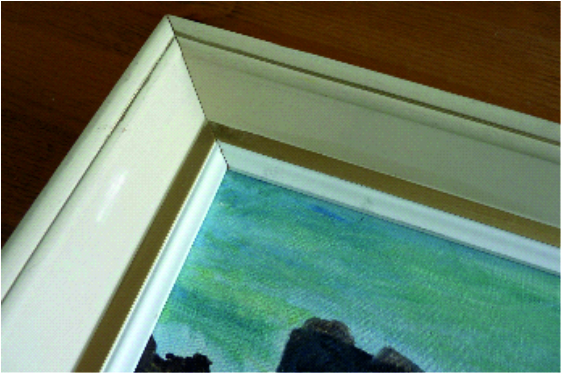 | • Additional framework The side edge remains invisible. We do not offer such a service, but it is easily accessible, there are framing workshops everywhere |
6. CLEANING AND CARE. Paintings on canvas are considered very durable, but still require care.
• Do not expose the canvas to direct sunlight for a long time as the colors may fade. Of course, nothing will happen to him if he is exposed accidentally for a while in the sun. It is important that the place of the picture is not constantly lit by the slate.
• Wipe the dust with a dry cloth and / or feathers. The canvas is usually water resistant, but we strongly recommend that you do not use water to clean it. If you happen to spill water on the canvas painting, it is better to absorb it immediately.
• Do not place the panel in place of sudden changes in temperature and / or humidity. The canvas may be damaged or stretched.
• Clean the canvas gently so that it does not stretch and dents appear.
• Can they be cleaned if they have been scratched with a pen or felt-tip pen by children? Unfortunately, the canvas is a densely woven fabric of cotton or linen fibers. Although it has undergone technological processing for strength, the material still has the ability to absorb chemical dyes, which will make it extremely difficult to completely remove traces of them. We recommend that you hang a picture on a wall that your child does not have direct access to.

